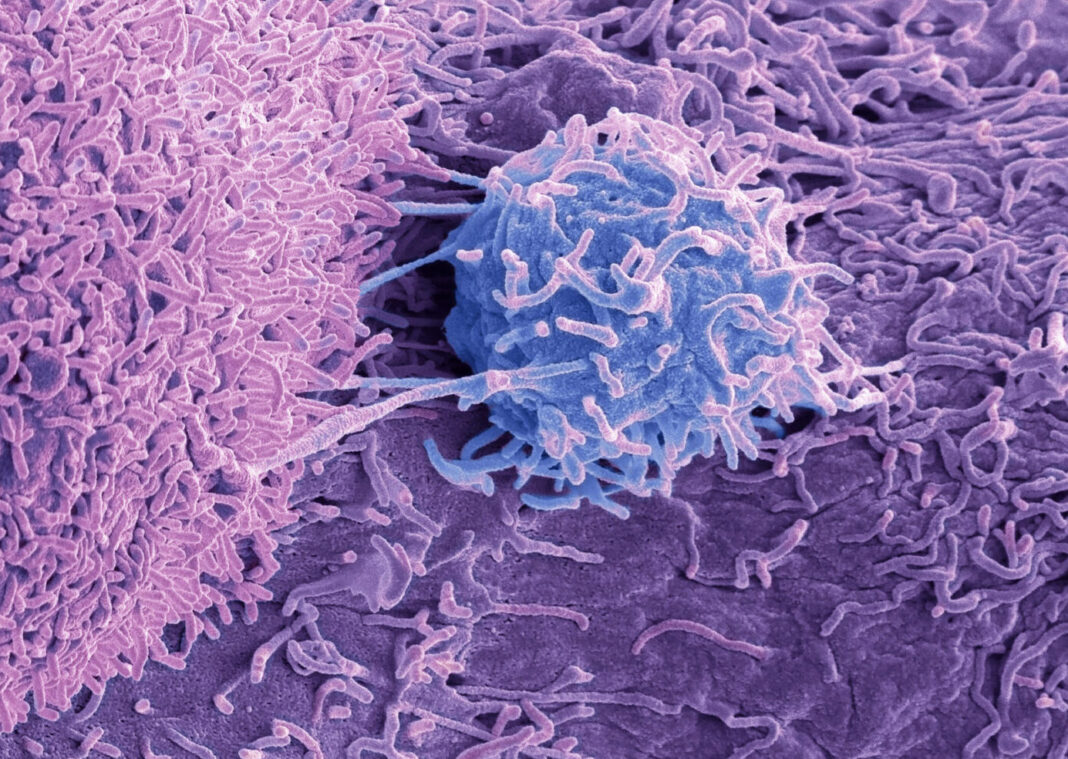Looking to have a better understanding of how the androgen receptor works in prostate cancer, researchers at Baylor College of Medicine conducted comprehensive studies of the 3-D structure of the receptor. Their findings unveiled the structure of a site on the receptor, the N-terminal domain, where it interacts with activity-enhancing coactivators that together regulate gene expression that drives prostate cancer.
The study, “Structural Insights of Transcriptionally Active, Full-Length Androgen Receptor Coactivator Complexes,” published in Molecular Cell, offers new insights for the design of future treatments for this devastating condition, according to the team.
“Steroid receptors activate gene transcription by recruiting coactivators to initiate transcription of their target genes. For most nuclear receptors, the ligand-dependent activation function domain-2 (AF-2) is a primary contributor to the nuclear receptor (NR) transcriptional activity. In contrast to other steroid receptors, such as ERα, the activation function of androgen receptor (AR) is largely dependent on its ligand-independent AF-1 located in its N-terminal domain (NTD). It remains unclear why AR utilizes a different AF domain from other receptors despite that NRs share similar domain organizations,” write the investigators.
“Here, we present cryoelectron microscopy (cryo-EM) structures of DNA-bound full-length AR and its complex structure with key coactivators, SRC-3 and p300. AR dimerization follows a unique head-to-head and tail-to-tail manner. Unlike ERα, AR directly contacts a single SRC-3 and p300. The AR NTD is the primary site for coactivator recruitment. The structures provide a basis for understanding assembly of the AR:coactivator complex and its domain contributions for coactivator assembly and transcriptional regulation.”
“The androgen receptor binds to and mediates the effects of the androgenic hormone testosterone. The receptor is found in several tissues of both males and females, including skeletal muscle, heart and the nervous and the reproductive systems,” said co-first author Ping Yi, PhD, assistant professor of molecular and cellular biology at Baylor. “In males, the androgen receptor contributes to the development of sexual characteristics, and in both males and females it also regulates hair growth and sex drive.”
Previous studies had shown that when the androgen receptor binds to testosterone, the resulting molecular complex travels to the cell nucleus where it interacts with DNA, turning genes on or off as necessary to regulate development and growth. To carry on its activity, the androgen receptor also binds to coactivators and other molecules that promote its gene-regulatory function. However, how all these molecules are put together in a functional complex with the androgen receptor was not known.
“The androgen receptor drives prostate cancer,” noted co-corresponding author Bert O’Malley, MD, chancellor and former long-time chair of the Department of Molecular and Cellular biology at Baylor. “To treat this cancer effectively, we need to better understand how the androgen receptor works. In this study, we reveal for the first time the complete 3-D structure of the active, full-length androgen receptor-coactivator complex as it interacts with DNA.”
Before this study, researchers only had a partial idea of the 3-D structure of the androgen receptor. They were the N-terminal domain, which biochemical evidence suggested might be crucial for its activity. Resolving the complete structure of the receptor would help understand why the N-terminal domain is key to the receptor’s activity.
“Cryo-electron microscopy let us see what the N-terminal domain of the androgen receptor looks like, how the protein is organized and how this and other individual domains contribute to the coactivated protein and its function,” said Yi, a member of Baylor’s Dan L Duncan Comprehensive Cancer Center.
The researchers discovered that the N-terminal domain at the beginning of the androgen receptor is where the coactivators bind, activating the complex that drives prostate cancer. This finding was in marked contrast with what the same researchers had discovered for the estrogen receptor, which is a major driver of breast cancer.
The androgen and the estrogen receptors belong to the same family of steroid nuclear receptors and share similar 3-D structures. However, despite having general structural similarities, in the estrogen receptor the coactivators bind not to the N-terminal domain at the beginning of the molecule, but to the C-terminal domain at the end of the molecule. This finding has important implications generating drugs for cancer treatment, explains O’Malley.
“The androgen receptor drug inhibitors that are currently available for prostate cancer treatment bind to the C-terminal domain, which we found is not the main interactive site of the androgen receptor,” he said. “Our work strongly supports further studies to determine the effect that drugs directed at the androgen receptor’s N-terminal domain have on prostate cancer growth.”


